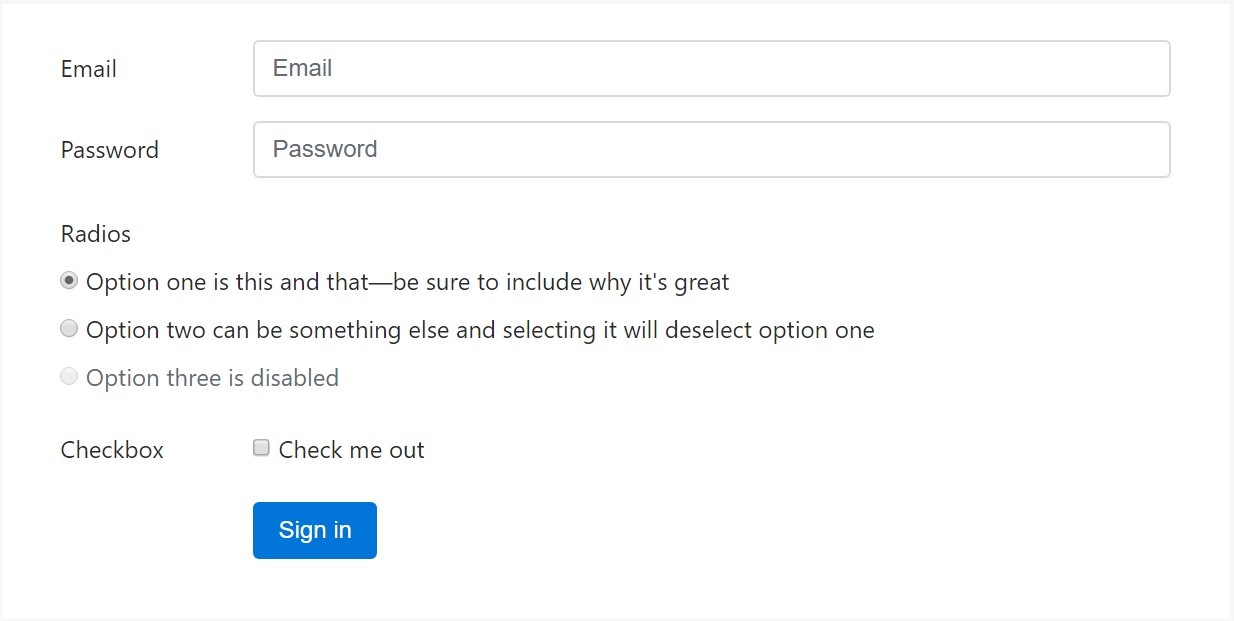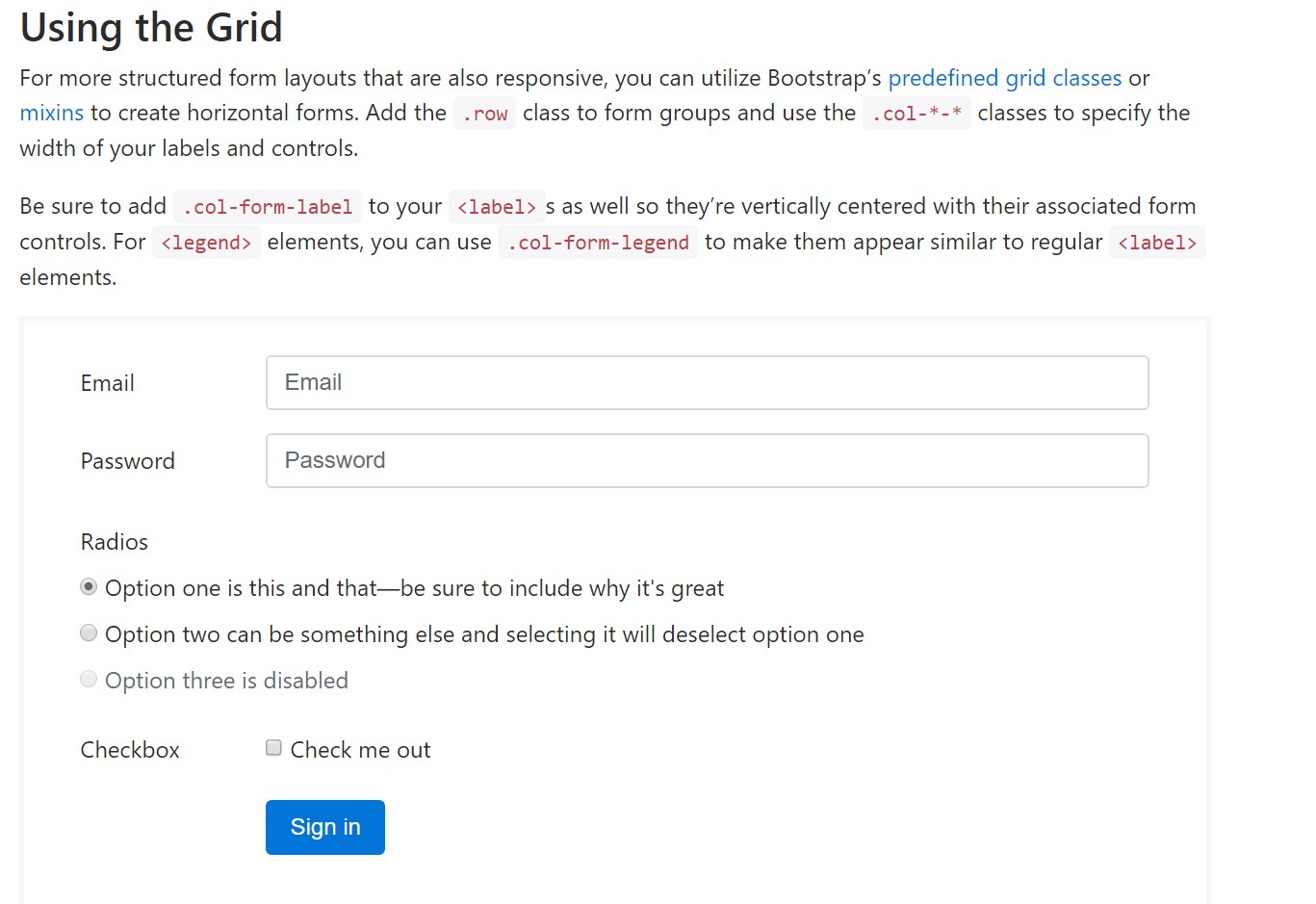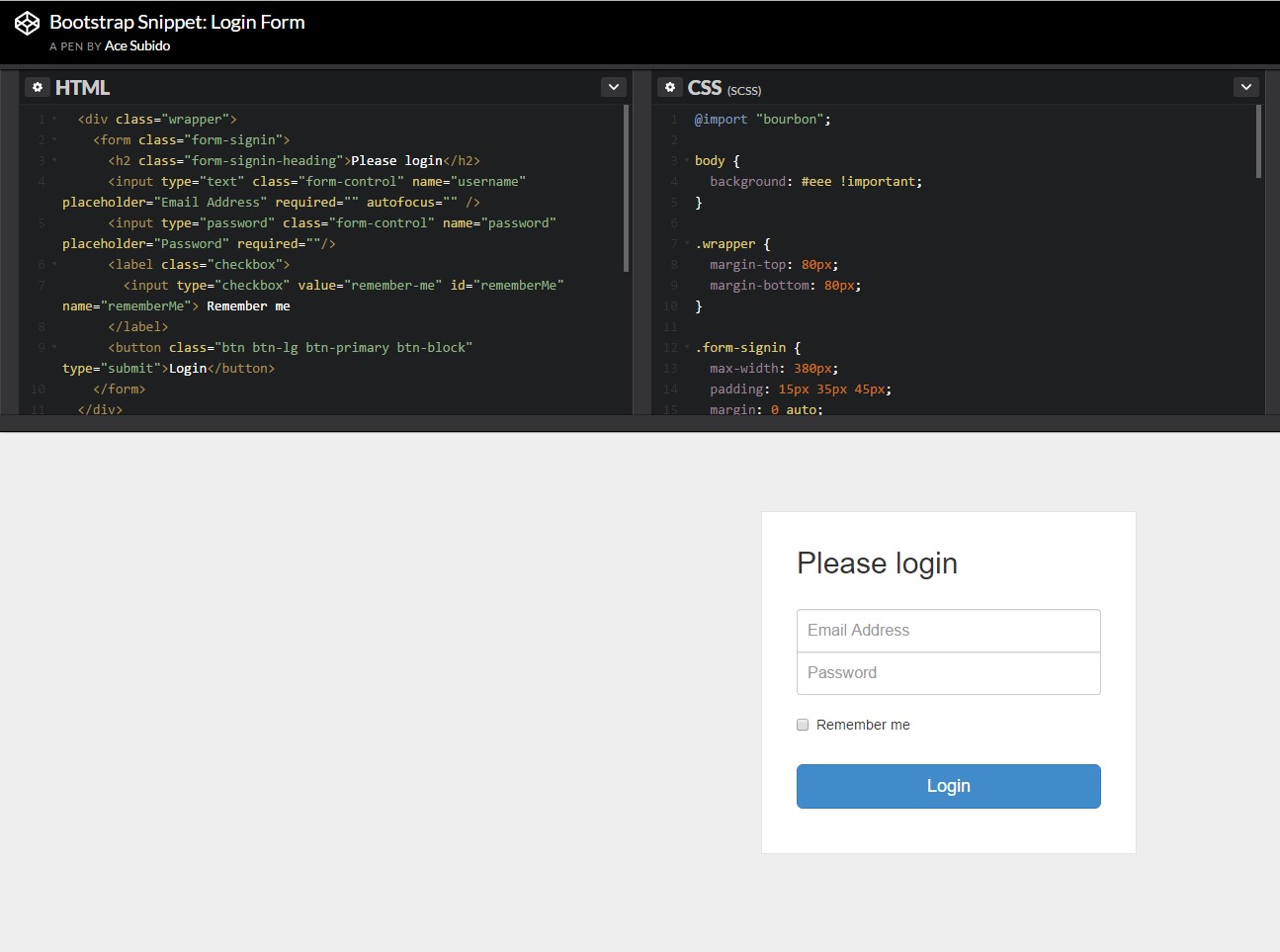Bootstrap Login forms Popup
Overview
In certain situations we desire to defend our precious web content to give access to only specific people to it or dynamically customize a part of our web sites baseding on the specific viewer that has been actually observing it. But how could we actually know each specific visitor's identity due to the fact that there are simply so many of them-- we should discover an easy and efficient solution getting to know who is whom.
This is exactly where the user accessibility management arrives first communicating with the site visitor with the so familiar login form element. Inside the latest 4th version of the most well-known mobile friendly website page development framework-- the Bootstrap 4 we have a plenty of elements for producing this kind of forms so what we are certainly planning to do here is looking at a specific example how can a simple login form be produced using the useful tools the current version arrives with.
Effective ways to work with the Bootstrap Login forms Layout:
For starters we need to have a <form> element to wrap around our Bootstrap login form.
Inside of it certain .form-group elements should be contained -- at least two of them actually-- one for the username or else e-mail and one-- for the certain site visitor's password.
Ordinarily it's easier to utilize individual's mail as an alternative to making them determine a username to authorize to you due to the fact that typically anybody realises his e-mail and you have the ability to always ask your users later to especially provide you the way they would certainly like you to address them. So within the first .form-group we'll initially insert a <label> element with the .col-form-label class added, a for = " ~ the email input which comes next ID here ~ " attribute and certain relevant recommendation for the users-- like "Email", "Username" or something.
After that we require an <input> element with a type = "email" in case we need the email or else type="text" in the event a username is desired, a special id=" ~ some short ID here ~ " attribute together with a .form-control class installed on the element. This will produce the area in which the site visitors will present us with their usernames or e-mails and in the event that it's emails we're talking about the internet browser will additionally check out of it's a legitimate mail entered due to the type property we have defined.
Next comes the .form-group in which the password should be provided. As usual it should first have some kind of <label> prompting what's needed here caring the .col-form-label class, some meaningful text like "Please enter your password" and a for= " ~ the password input ID here ~ " attribute pointing to the ID of the <input> element we'll create below.
After that comes the .form-group in which the password needs to be provided. As a rule it must initially have some kind of <label> prompting what is actually needed here carrying the .col-form-label class, special relevant message such as "Please type your password" and a for= " ~ the password input ID here ~ " attribute pointing to the ID of the <input> element we'll create below.
Next we need to put an <input> with the class .form-control and a type="password" attribute so we get the well-known thick dots visual appeal of the characters typed in this area and of course-- a unique id= " ~ should be the same as the one in the for attribute of the label above ~ " attribute to fit the input and the label above.
At last we really need a <button> element in order the site visitors to get allowed providing the accreditations they have simply just provided-- make sure you designate the type="submit" property to it.
Some example of login form
For even more designed form layouts that are equally responsive, you can apply Bootstrap's predefined grid classes alternatively mixins to produce horizontal forms. Include the . row class to form groups and make use of the .col-*-* classes in order to specify the width of your controls and labels.
Make certain to bring in .col-form-label to your <label>-s too so they are definitely vertically centered with their involved form controls. For <legend> components, you can certainly use .col-form-legend making them appear the same as standard <label> elements.

<div class="container">
<form>
<div class="form-group row">
<label for="inputEmail3" class="col-sm-2 col-form-label">Email</label>
<div class="col-sm-10">
<input type="email" class="form-control" id="inputEmail3" placeholder="Email">
</div>
</div>
<div class="form-group row">
<label for="inputPassword3" class="col-sm-2 col-form-label">Password</label>
<div class="col-sm-10">
<input type="password" class="form-control" id="inputPassword3" placeholder="Password">
</div>
</div>
<fieldset class="form-group row">
<legend class="col-form-legend col-sm-2">Radios</legend>
<div class="col-sm-10">
<div class="form-check">
<label class="form-check-label">
<input class="form-check-input" type="radio" name="gridRadios" id="gridRadios1" value="option1" checked>
Option one is this and that—be sure to include why it's great
</label>
</div>
<div class="form-check">
<label class="form-check-label">
<input class="form-check-input" type="radio" name="gridRadios" id="gridRadios2" value="option2">
Option two can be something else and selecting it will deselect option one
</label>
</div>
<div class="form-check disabled">
<label class="form-check-label">
<input class="form-check-input" type="radio" name="gridRadios" id="gridRadios3" value="option3" disabled>
Option three is disabled
</label>
</div>
</div>
</fieldset>
<div class="form-group row">
<label class="col-sm-2">Checkbox</label>
<div class="col-sm-10">
<div class="form-check">
<label class="form-check-label">
<input class="form-check-input" type="checkbox"> Check me out
</label>
</div>
</div>
</div>
<div class="form-group row">
<div class="offset-sm-2 col-sm-10">
<button type="submit" class="btn btn-primary">Sign in</button>
</div>
</div>
</form>
</div>Final thoughts
Generally these are the basic features you'll require in order to generate a basic Bootstrap Login forms Dropdown through the Bootstrap 4 system. If you're after some more complicated visual appeals you are really free to take a complete advantage of the framework's grid system arranging the components pretty much any way you would certainly think they should take place.
Take a look at some online video short training regarding Bootstrap Login forms Design:
Linked topics:
Bootstrap Login Form main records

Training:How To Create a Bootstrap Login Form

Other example of Bootstrap Login Form
